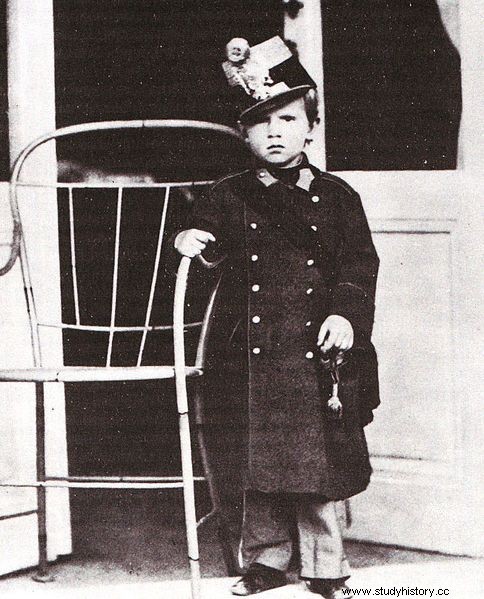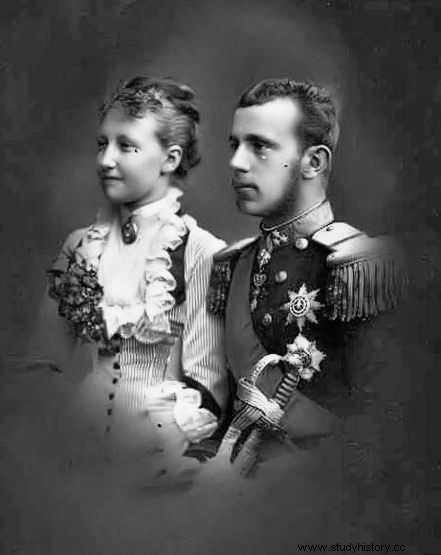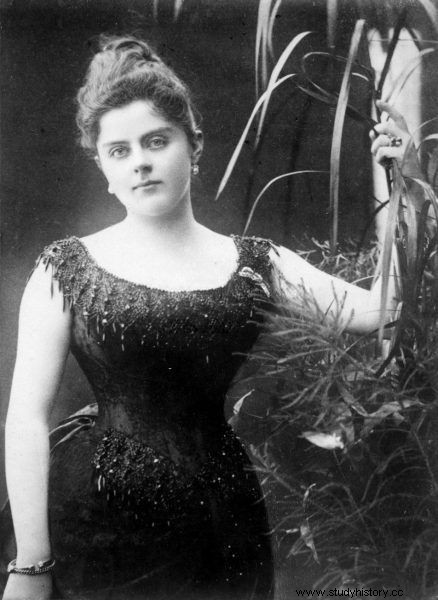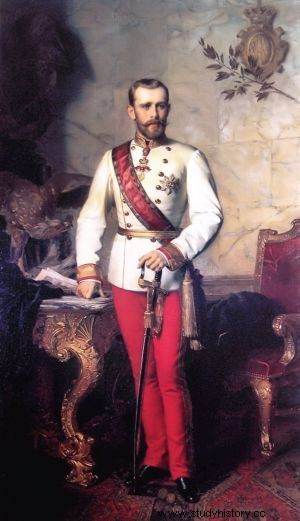On January 30, 1889, shots were fired at the hunting lodge of Mayerling, which marked the beginning of the end of the Habsburg dynasty. Archduke Rudolph, the son of the famous Empress Sisi and Emperor Franz Joseph, known for his bustling life, was found dead with a revolver in his hand. At his side lay the body of a young mistress with whom he spent the last hours of his life. The events of that cold night were not only to affect the fate of the Austrian dynasty, but also to influence the perception of a figure whose reign could change the course of history.
The lost hope of the Austrian throne
The Austro-Hungarian heir to the throne was prepared for the role assigned to him by birth from an early age. The Habsburg Empire was a territorially vast state, made up of many nations using different languages and characterized by different cultures and customs. Rudolf's father, Franz Joseph I, was an educated ruler, but not a progressive one. . During his reign, the empire slowly began to lose its importance, despite various attempts to save his position.

Young Rudolf Habsburg
Emperor Francis also failed in the role of a father. Focused on his duties, he did not devote much time and attention to his son. He believed more in strict military discipline in his upbringing than showing affection . Rudolph's mother was also far from ideal. Trapped in an unhappy relationship and focused solely on her appearance, Empress Elizabeth preferred to spend her time on journeys that provided an escape from court life. However, she ensured that Rudolf was properly educated by handing him over to Joseph Latour von Thurnburg.
Thanks to his liberalism and humanistic views, Rudolf became convinced that life is more than just a barracks discipline. Von Thurnburg introduced him to other scholars as well. The boy realized that he had come to live in a period of great changes, he also understood that his father's power was an anachronistic and decaying creation.
These views diverged him even more from the emperor.
Activist Archduke
Despite the lack of support from his father, Rudolf decided to engage in anonymous journalistic activity to promote his beliefs. He wrote for Neues Wiener Tagblatt, the newspaper owned by his friend Moritz Szeps. In his articles, he contrasted the authoritative Habsburg rule with the growing democratic longings across Europe. Unfortunately, the activity of the Archduke very quickly ceased to be anonymous, thus bringing more problems than good.
His modern approach to exercising power disliked not only Emperor Francis, but also the German Chancellor Otto Bismark. The German Empire, with its ever stronger influence, did not inspire confidence in Rudolf, which he spoke openly about calling for an alliance with Russia. In his opinion, it was supposed not only to strengthen the position of the Habsburg country, but also to positively influence the Slavic inhabitants of Austria-Hungary. All this meant that the German Chancellor, concerned about the thoughts of the Archduke, ordered his agents to follow Rudolph as a potentially dangerous heir to the throne.

Rudolf Habsburg 1889
The Archduke also counted on the changes that would come with the new rulers at the two great courts. For a time, Rudolph had been deluded by a vision of a Europe united by tolerance and cooperation, which might have happened if two other liberal heirs took power:Prince Frederick of Germany and Edward, Prince of Wales, of Great Britain. Frederick, however, died of cancer a few months after the coronation, and his son, William II, thought quite differently about a future united and peaceful Europe than Rudolf did. In turn, Prince Edwrad had to wait for his chance until 1901, when his mother, Queen Victoria, died.
Meanwhile, in Austria-Hungary political sentiment began to spread, which no longer favored the archduke's convictions. More and more people were inclined to tighten relations with the German Reich, and anti-Semitic sentiments also began to dominate. Opponents of the union with Germany were hailed as traitors and guardians of Jewish interests.
These tendencies had an increasingly strong influence on Rudolf's mood and his perception of the world around him. Deeply concerned about the direction Europe was headed, Rudolf felt increasingly disappointed and lonely. The situation was also not improved by a marriage in which he was stuck against his will.
Unhappy marriage and incorrigible womanizer
In 1881, the heir to the Viennese throne married nearly seventeen-year-old Stefania Clotilde Koburg, a Belgian princess chosen for him by his father. Handsome, experienced and known for his love conquests, the Archduke was not satisfied with this marriage. His future wife was not only a nasty and naive young lady. She was also the wrong woman alongside a highly intelligent, very sensitive and uneasy heir to the throne. Rudolph needed a woman who understood his modern ambitions, and not just thinking in terms of tradition.
The house in which Stefania grew up was also not pleasant. Neither King Leopold II nor his wife were warm parents. They believed that strict education, even including sadistic punishments, was the best educational method. Therefore, Stefania's departure to Austria and becoming empress appeared to her like a great chance for a new life. Unfortunately, the marriage was not doomed to success from the beginning.

Rudolf and Stefania
The girl's wedding night turned out to be a great disappointment , which she remembered after decades with disgust . She was also unable to find herself at the Viennese court, where she was the object of jokes on the part of the public and Empress Sisi. Only after two years did she give birth to the first and, as it turned out later, the only child, a daughter, Elizabeth Maria, who did not have any rights to the throne because of her gender.
Rudolf himself quickly returned to his old riotous life, which contributed to the infection of his wife with gonorrhea, which ruined her chances of having more children. The unhappy woman began to play on her husband, following him in the guise of a washerwoman, she appeared in the suburbs at wine bars, where she expected to meet her husband. The scenes that took place were told throughout the city .
Additionally, in order to prove her position as the future empress, tried to exert a political influence on Rudolph by criticizing some of her husband's friends, such as Moritz Sheps (...) Stefania could not understand that Rudolf preferred the position of president of the republican state over emperor .
Ultimately, it was she who pushed him into the arms of Mitzi Caspar, and later Baroness Maria von Vetser, with whom he ended his life on January 30, 1889.
Death wish
Misunderstanding on all sides pushed Rudolph towards alcohol, drugs and women of dubious reputation as well as contributing to his obsession with death. Mitzi Caspar was the first to find out about it, to whom the Archduke proposed to commit suicide together. At first, the woman treated the offer as a joke, ridiculing the heir to the Austrian throne. However, when she found out that Rudolf was serious, she decided to report to the police station and tell her about everything. Of course, she was not taken seriously.
Stefania herself also began to observe the change in her husband's behavior. Concerned, she tried to draw Franz Joseph's attention to the mental health of his only son, but the emperor did not see the danger in which Rudolph was. The daughter-in-law, on the other hand, was for him the last person from whom he would expect advice and from whom he took advice.
And although it was probably too late, the lack of interest and looking away from the truth which he had before him sealed the fate of the Habsburg dynasty.

Maria Vetsera
Tragic night in Mayerling
In October 1888, Rudolf met Baroness Maria von Vetser, a 17-year-old beauty with dark hair and a figure who had already seduced several other men before the Archduke. The couple in love with madness got into a short and extremely passionate romance which ended on a January night at the imperial hunting lodge Mayerling.
Rudolph came to him on January 28 under the pretext of taking part in a hunt, for which he also invited his friend Count Hoyos and Prince Coburg, who was his brother-in-law. Maria's presence was kept secret from the guests, and only the Archduke's valet, Johann Loschek, knew about her.
On the night of January 30, Rudolph gave an order to his servant not to let anyone in, not even the Emperor himself. The command was understood as a harbinger of a sensual and long night with a young lover. In the morning, when the valet was unable to enter the Archduke's room to serve breakfast, he notified Count Hoyos. The latter ordered Loschek to hack the bedroom door with an ax. Their eyes saw a macabre scene:they were both lying in a bloody bed. In the hand of the dead heir was a probable murder weapon - a revolver. Everything pointed to the lovers' double suicide.
Theories and conspiracies
Probably Rudolf shot his beloved first and then committed suicide. However, the Count Hoyos did not dare to convey this news to the imperial court. So he decided to tell Empress Sisi that Maria had poisoned herself and the heir to the throne. Of course, this lie had short legs, but the Habsburgs decided to wade further into splashing their eyes. They made an official announcement that he died of a heart attack. Only after receiving assurances of the Archduke's Catholic funeral, information about his suicide was made public.

The circumstances of the death of Archduke Rudolph were carefully concealed by the family
Such behavior and the infamous lifestyle of the heir to the Austrian throne contributed to the creation and spread of many theories. In one, Rudolf killed his mistress as a result of an argument, and then took his own life. In another, assassins acting on behalf of the German government, and even of Franz Joseph himself, who did not approve of his political views, were allegedly responsible for his death. The couple themselves left farewell letters, but no one specific reason can be drawn from them.
The tragic end did not bring the lovers to rest together, for which Rudolf asked in his last will. The Imperial Family took care to cover up as much as possible the events of the January night of 1889. It was not seen for a long time that Maria accompanied Rudolf and decided to take this drastic step with him.
Although today the figure of Rudolf is not so known for his activities and views, the story of the Archduke's forbidden love for Maria still fascinates the creators. They became the inspiration for many films, novels and theater plays. The most famous adaptation is Terence Young's 1968 film, in which Catherine Deneuve and Omar Sharif played the roles of lovers.
